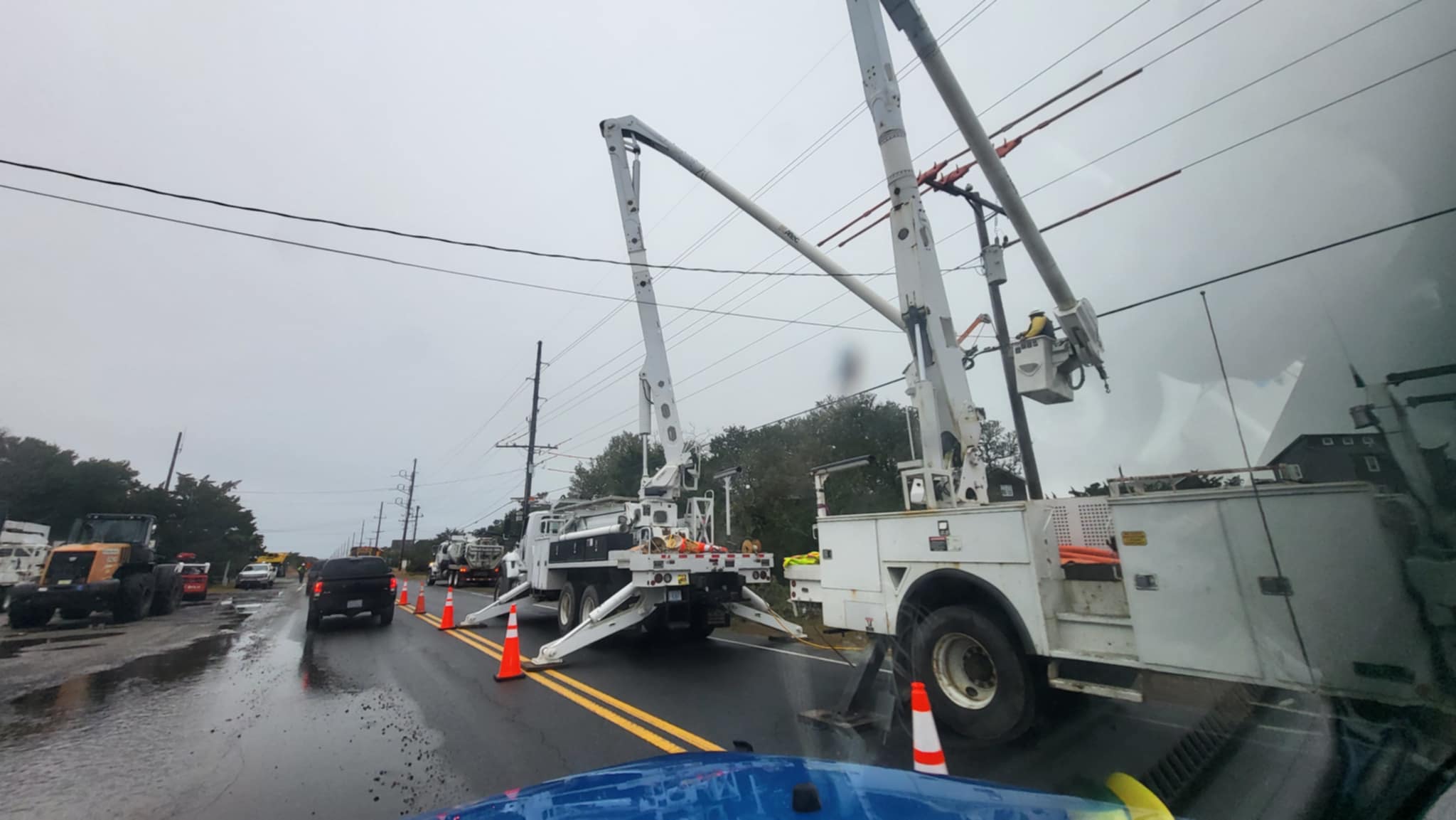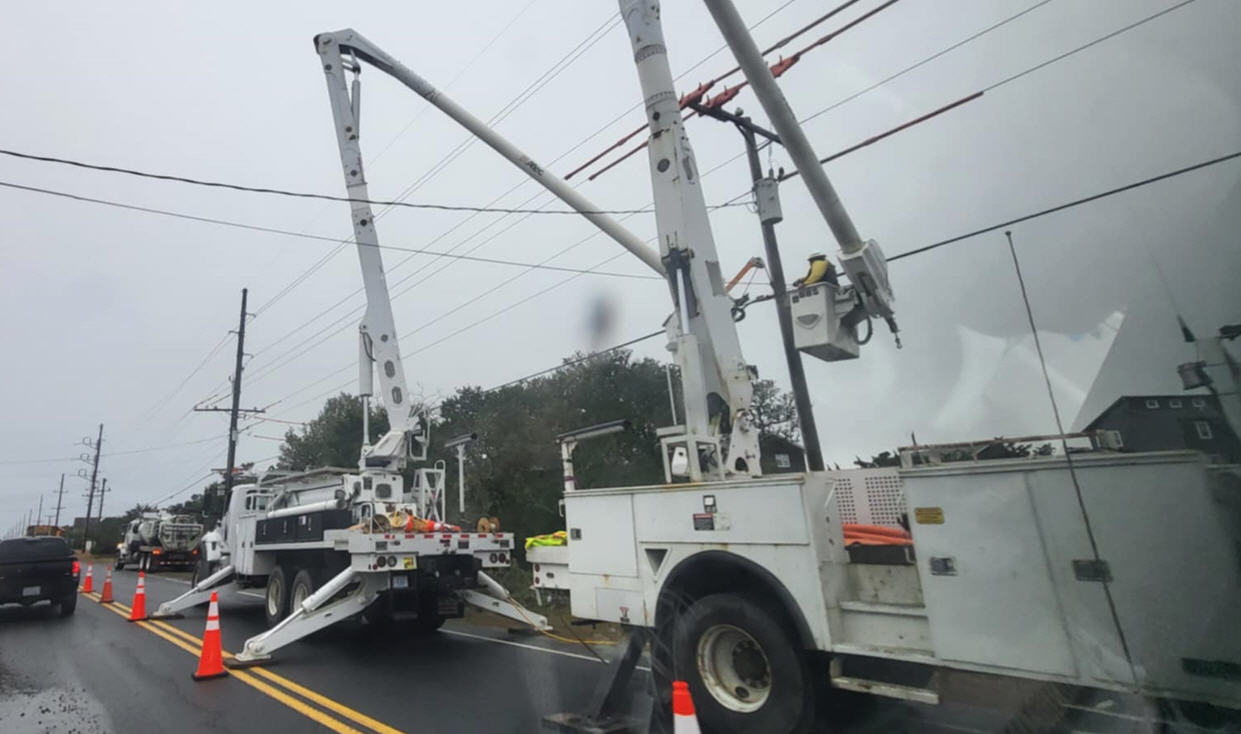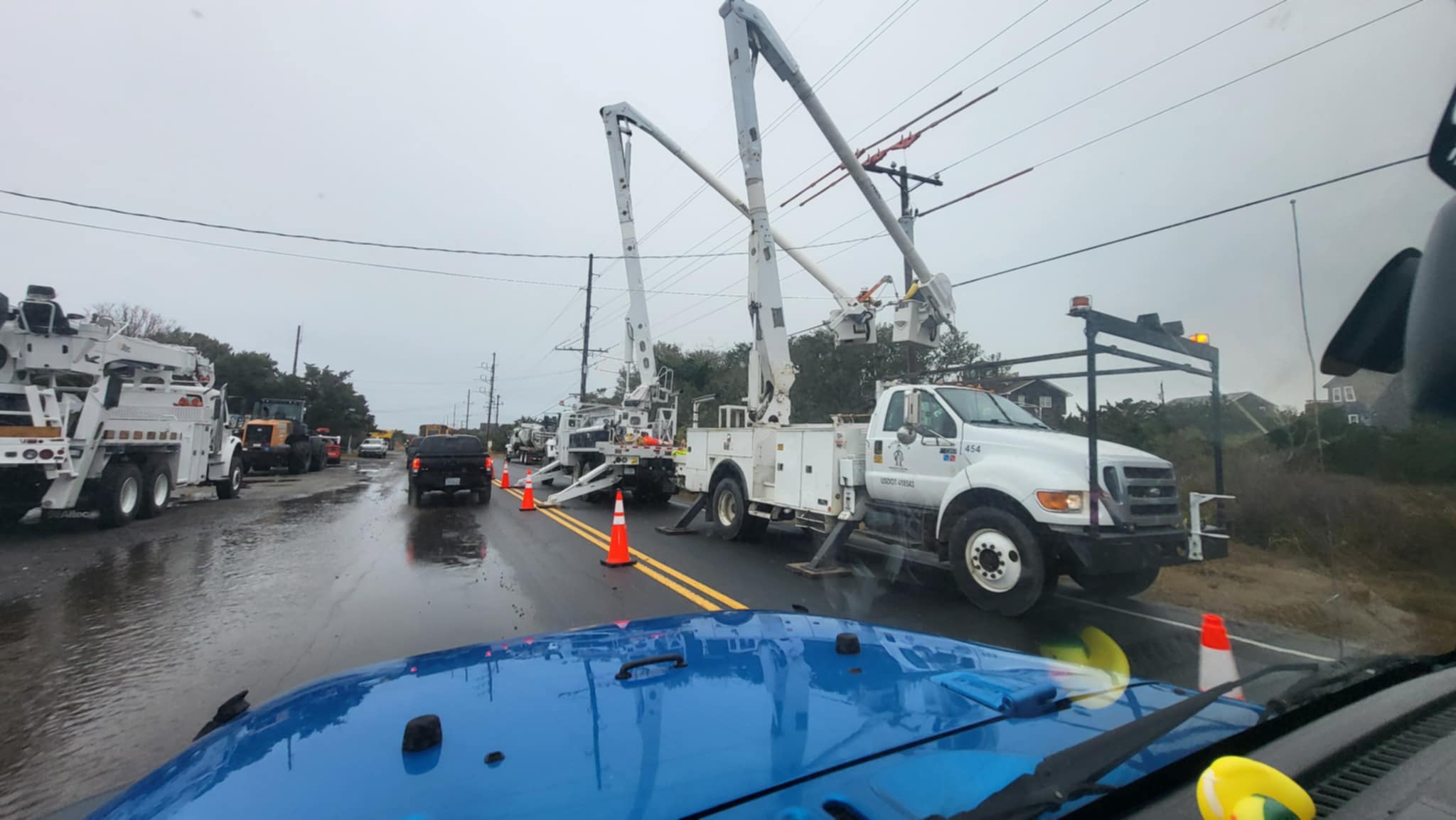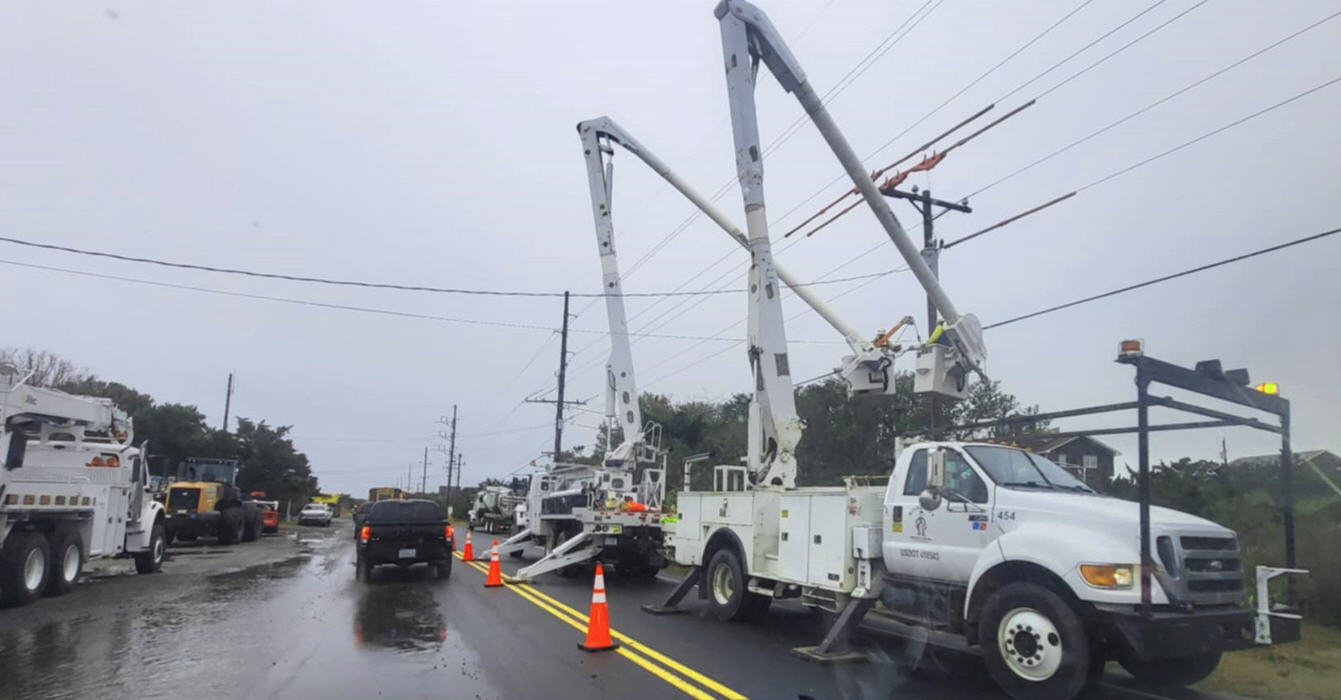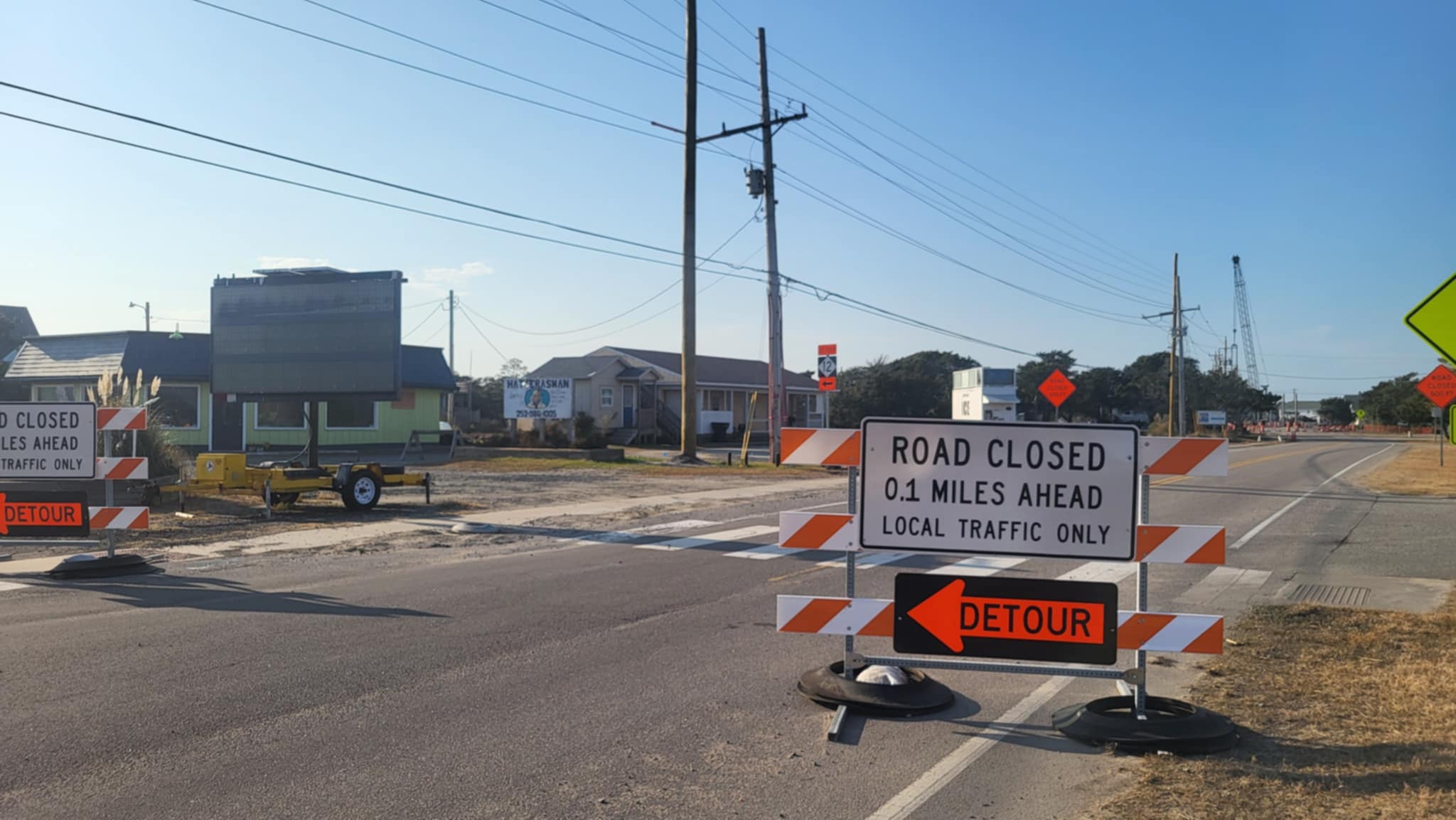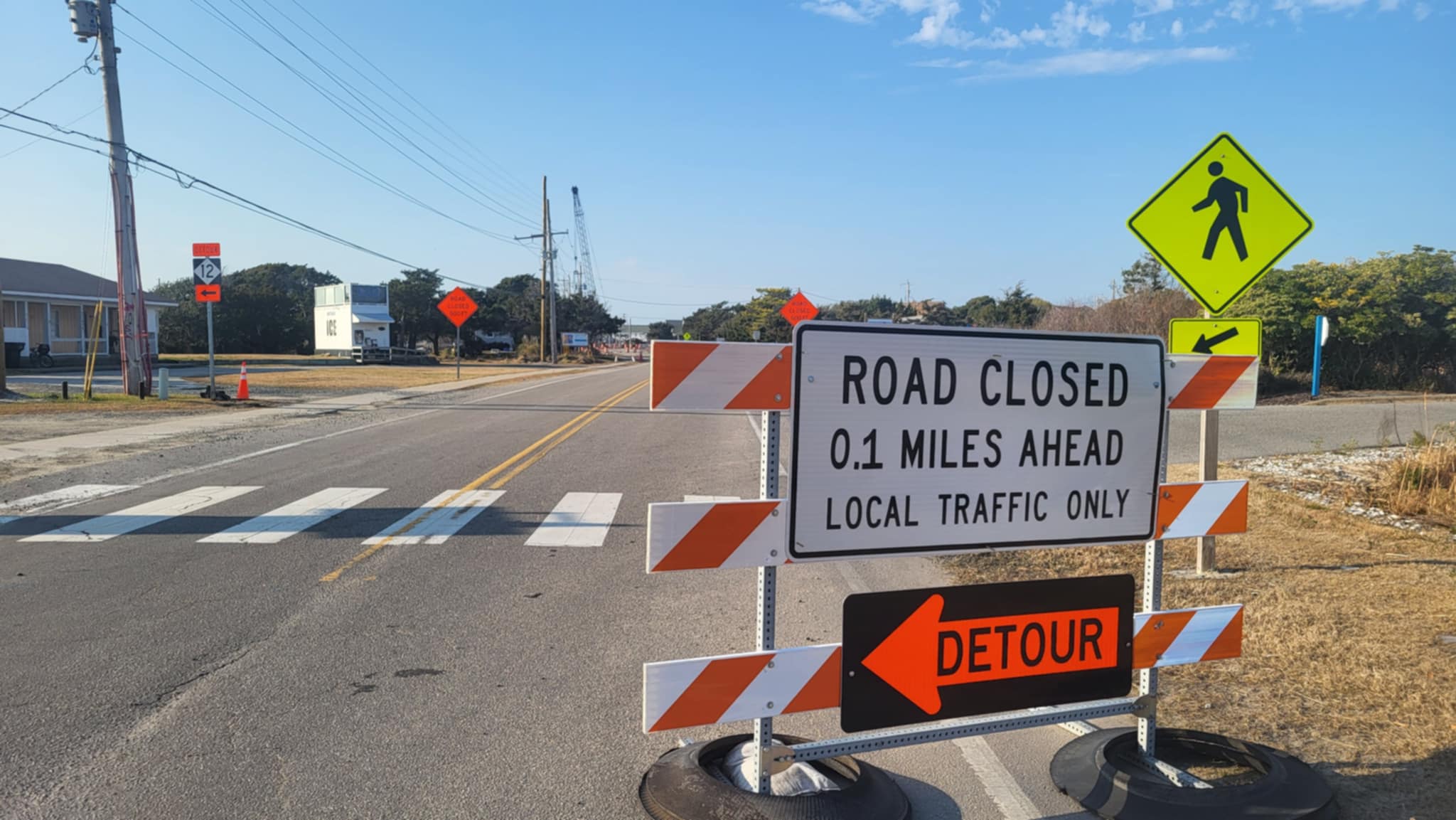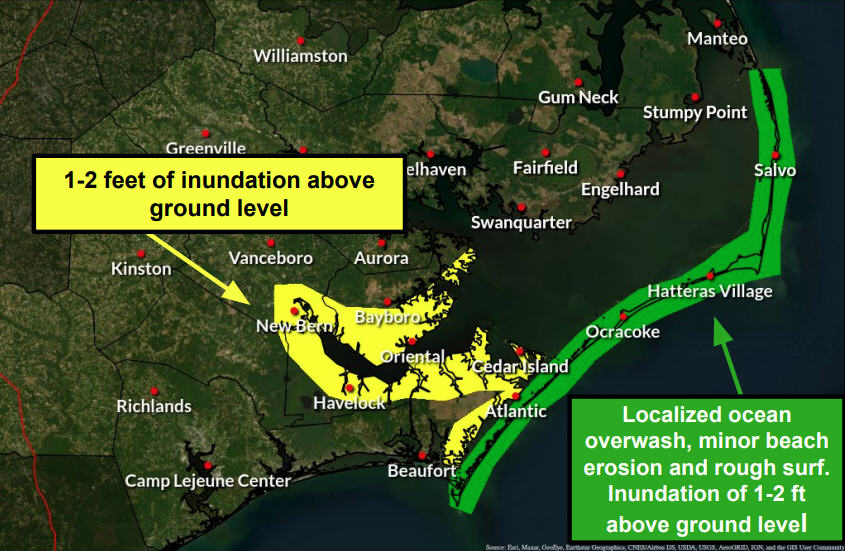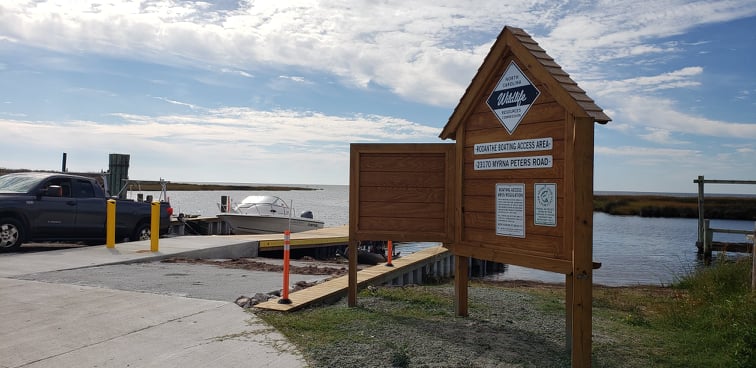Neighbors of the old Coast Guard housing in Buxton are concerned about development By CATHERINE KOZAK
By CATHERINE KOZAK
By CATHERINE KOZAK
Developers who have contracted to buy the housing complex at the former Coast Guard base in Buxton are renewing promises to keep the community’s concerns in mind as they plan restoration of the property.
Neighbors of the long-abandoned base came out in force at a public hearing on a zoning change request held by Dare County earlier this month to express their trepidation about the future use of the 45-unit duplexes.
“We were a little surprised,” Jim Pereira, spokesman for Sylakama, LLC, a Virginia Beach acquisition group, said in a telephone interview. “We were not expecting there to be so much opposition.”
After listening to the public’s concerns about the project, “Cottages at the Cape,” the Dare County Board of Commissioners agreed to table the issue until May 21.
Pereira said that the family-owned company wants to be a good neighbor and be an asset to the community. He said representatives of the company plan to meet with neighbors before May 15 to discuss the specifics about their updated plans.
“We don’t want this to be pushed through and really affect the value of our homes,” said Chris Wade, a homeowner for nine years in neighboring Diamond Shoals Estates who had attended the hearing. “We’d like to see them conform to our neighborhood just like everybody else does.”
Wade said that standing stormwater at the complex after heavy rain creates overwhelming mosquito infestations and overflows into their subdivision. Photographs taken last winter after a rainstorm showed huge ponds of water at the complex and flooding in nearby streets and yards at Diamond Shoals.
“It’s incredible, the amount of water,” she said. “It doesn’t just disappear. It’s there for weeks.”
The neighbors are seeking more information on the project, Wade said, to determine the best way to respond.
Last December, the Coast Guard accepted a bid of $2,625,000 from Sylakama for an as-is sale. As they went about addressing a checklist of items necessary to close the deal, Pereira said, the developers were informed, much to their surprise, that the site had no operating water system, a requirement to secure a bank loan.
The closing date on the property has been moved to July.
After the Coast Guard issued a special permit, the company restored the system.
Engineers are in the process now, Pereira said, of developing “a more formal approach” to stormwater management and wastewater treatment at the site. Meanwhile, they are seeking to change the zoning from Natural Historic to Buxton Natural Historic to allow duplexes and family housing units at the site to be in compliance. Current zoning does not allow multi-family units.
Developers who have contracted to buy the housing complex at the former Coast Guard base in Buxton are renewing promises to keep the community’s concerns in mind as they plan restoration of the property.
Neighbors of the long-abandoned base came out in force at a public hearing on a zoning change request held by Dare County earlier this month to express their trepidation about the future use of the 45-unit duplexes.
“We were a little surprised,” Jim Pereira, spokesman for Sylakama, LLC, a Virginia Beach acquisition group, said in a telephone interview. “We were not expecting there to be so much opposition.”
After listening to the public’s concerns about the project, “Cottages at the Cape,” the Dare County Board of Commissioners agreed to table the issue until May 21.
Pereira said that the family-owned company wants to be a good neighbor and be an asset to the community. He said representatives of the company plan to meet with neighbors before May 15 to discuss the specifics about their updated plans.
“We don’t want this to be pushed through and really affect the value of our homes,” said Chris Wade, a homeowner for nine years in neighboring Diamond Shoals Estates who had attended the hearing. “We’d like to see them conform to our neighborhood just like everybody else does.”
Wade said that standing stormwater at the complex after heavy rain creates overwhelming mosquito infestations and overflows into their subdivision. Photographs taken last winter after a rainstorm showed huge ponds of water at the complex and flooding in nearby streets and yards at Diamond Shoals.
“It’s incredible, the amount of water,” she said. “It doesn’t just disappear. It’s there for weeks.”
The neighbors are seeking more information on the project, Wade said, to determine the best way to respond.
Last December, the Coast Guard accepted a bid of $2,625,000 from Sylakama for an as-is sale. As they went about addressing a checklist of items necessary to close the deal, Pereira said, the developers were informed, much to their surprise, that the site had no operating water system, a requirement to secure a bank loan.
The closing date on the property has been moved to July.
After the Coast Guard issued a special permit, the company restored the system.
Engineers are in the process now, Pereira said, of developing “a more formal approach” to stormwater management and wastewater treatment at the site. Meanwhile, they are seeking to change the zoning from Natural Historic to Buxton Natural Historic to allow duplexes and family housing units at the site to be in compliance. Current zoning does not allow multi-family units.
Developers who have contracted to buy the housing complex at the former Coast Guard base in Buxton are renewing promises to keep the community’s concerns in mind as they plan restoration of the property.
Neighbors of the long-abandoned base came out in force at a public hearing on a zoning change request held by Dare County earlier this month to express their trepidation about the future use of the 45-unit duplexes.
“We were a little surprised,” Jim Pereira, spokesman for Sylakama, LLC, a Virginia Beach acquisition group, said in a telephone interview. “We were not expecting there to be so much opposition.”
After listening to the public’s concerns about the project, “Cottages at the Cape,” the Dare County Board of Commissioners agreed to table the issue until May 21.
Pereira said that the family-owned company wants to be a good neighbor and be an asset to the community. He said representatives of the company plan to meet with neighbors before May 15 to discuss the specifics about their updated plans.
“We don’t want this to be pushed through and really affect the value of our homes,” said Chris Wade, a homeowner for nine years in neighboring Diamond Shoals Estates who had attended the hearing. “We’d like to see them conform to our neighborhood just like everybody else does.”
Wade said that standing stormwater at the complex after heavy rain creates overwhelming mosquito infestations and overflows into their subdivision. Photographs taken last winter after a rainstorm showed huge ponds of water at the complex and flooding in nearby streets and yards at Diamond Shoals.
“It’s incredible, the amount of water,” she said. “It doesn’t just disappear. It’s there for weeks.”
The neighbors are seeking more information on the project, Wade said, to determine the best way to respond.
Last December, the Coast Guard accepted a bid of $2,625,000 from Sylakama for an as-is sale. As they went about addressing a checklist of items necessary to close the deal, Pereira said, the developers were informed, much to their surprise, that the site had no operating water system, a requirement to secure a bank loan.
The closing date on the property has been moved to July.
After the Coast Guard issued a special permit, the company restored the system.
Engineers are in the process now, Pereira said, of developing “a more formal approach” to stormwater management and wastewater treatment at the site. Meanwhile, they are seeking to change the zoning from Natural Historic to Buxton Natural Historic to allow duplexes and family housing units at the site to be in compliance. Current zoning does not allow multi-family units.
Speakers at the hearing objected to zoning being changed to accommodate the developers, but Pereira said the proposed change is similar to being grandfathered, except they want to be able to rebuild after a storm if the buildings are more than 50 percent damaged. The actual footprint of the units would not change, he said.
While neighboring residents expressed skepticism, they are open to a well-done project that addresses their worries about the site.
“Of course, we would like something nice to be done with that property,” said Diamond Shoals homeowner Sue Jasinski. “But we want it to be done respectfully, and not abuse it and not overuse it.”
Engineers and consultants for the company went to the 8.16-acre site last week to look at ways to manage drainage and waste disposal, Pereira said. A recent survey, he added, found that the acreage was a little more than previously thought.
A combination of methods is being considered to control stormwater, he said.
Speakers at the hearing objected to zoning being changed to accommodate the developers, but Pereira said the proposed change is similar to being grandfathered, except they want to be able to rebuild after a storm if the buildings are more than 50 percent damaged. The actual footprint of the units would not change, he said.
While neighboring residents expressed skepticism, they are open to a well-done project that addresses their worries about the site.
“Of course, we would like something nice to be done with that property,” said Diamond Shoals homeowner Sue Jasinski. “But we want it to be done respectfully, and not abuse it and not overuse it.”
Engineers and consultants for the company went to the 8.16-acre site last week to look at ways to manage drainage and waste disposal, Pereira said. A recent survey, he added, found that the acreage was a little more than previously thought.
A combination of methods is being considered to control stormwater, he said.
Speakers at the hearing objected to zoning being changed to accommodate the developers, but Pereira said the proposed change is similar to being grandfathered, except they want to be able to rebuild after a storm if the buildings are more than 50 percent damaged. The actual footprint of the units would not change, he said.
While neighboring residents expressed skepticism, they are open to a well-done project that addresses their worries about the site.
“Of course, we would like something nice to be done with that property,” said Diamond Shoals homeowner Sue Jasinski. “But we want it to be done respectfully, and not abuse it and not overuse it.”
Engineers and consultants for the company went to the 8.16-acre site last week to look at ways to manage drainage and waste disposal, Pereira said. A recent survey, he added, found that the acreage was a little more than previously thought.
A combination of methods is being considered to control stormwater, he said.
One that is obvious is re-establishing the drainage system already in place on the complex’s 23 buildings, which are all guttered. As it was designed, the rainwater flows from the gutters into one of 16 stainless steel 1,500-gallon cisterns, which are above ground underneath the buildings and still in good condition. Each of the cisterns has a pump that directs the water to an irrigation system.
Pereira said that the gutters are no longer directing rainwater to the tanks, and it is instead flowing freely under the houses. But once the system is restored, it can collect 24,800 gallons of rain during a storm.
“It’s not a new technology at all,” Pereira said. “But it’s an effective technology to deal with some of your stormwater. It will take care of your average storm.”
Other potential management techniques include construction of a fresh water retention pond at the rear of the property, surrounded by natural plantings that discourage mosquitoes. Not only will the pond take excess water off the property, he said, it will have excess capacity to hold stormwater runoff. Also, an irrigation system will be constructed at the lowest portion of the property at the back to feed water to the rest of the property.
One that is obvious is re-establishing the drainage system already in place on the complex’s 23 buildings, which are all guttered. As it was designed, the rainwater flows from the gutters into one of 16 stainless steel 1,500-gallon cisterns, which are above ground underneath the buildings and still in good condition. Each of the cisterns has a pump that directs the water to an irrigation system.
Pereira said that the gutters are no longer directing rainwater to the tanks, and it is instead flowing freely under the houses. But once the system is restored, it can collect 24,800 gallons of rain during a storm.
“It’s not a new technology at all,” Pereira said. “But it’s an effective technology to deal with some of your stormwater. It will take care of your average storm.”
Other potential management techniques include construction of a fresh water retention pond at the rear of the property, surrounded by natural plantings that discourage mosquitoes. Not only will the pond take excess water off the property, he said, it will have excess capacity to hold stormwater runoff. Also, an irrigation system will be constructed at the lowest portion of the property at the back to feed water to the rest of the property.
One that is obvious is re-establishing the drainage system already in place on the complex’s 23 buildings, which are all guttered. As it was designed, the rainwater flows from the gutters into one of 16 stainless steel 1,500-gallon cisterns, which are above ground underneath the buildings and still in good condition. Each of the cisterns has a pump that directs the water to an irrigation system.
Pereira said that the gutters are no longer directing rainwater to the tanks, and it is instead flowing freely under the houses. But once the system is restored, it can collect 24,800 gallons of rain during a storm.
“It’s not a new technology at all,” Pereira said. “But it’s an effective technology to deal with some of your stormwater. It will take care of your average storm.”
Other potential management techniques include construction of a fresh water retention pond at the rear of the property, surrounded by natural plantings that discourage mosquitoes. Not only will the pond take excess water off the property, he said, it will have excess capacity to hold stormwater runoff. Also, an irrigation system will be constructed at the lowest portion of the property at the back to feed water to the rest of the property.
Several methods, or a combination of them, Pereira said, are being considered for wastewater treatment, ranging from gravity-fed septic tanks, which do not need much management but take up a lot of property, to a pre-treatment system that could take advantage of existing infrastructure but would require more monitoring.
“Right now, the plan is to have it central to the property in the big green area,” he said.
The leach field for the original wastewater treatment facility just off the beach was destroyed during Hurricane Isabel in 2003, and the plant was subsequently dismantled and removed. With the dunes flattened, ocean overwash became a constant threat. The Coast Guard abandoned the base and the housing complex in 2005 as part of a reorganization.
Eventually, Sylakama hopes to be able to rent units year-round to the 40 or so Coast Guard personnel still stationed on the Outer Banks, as well as other “groupings,” such as teachers, state and federal workers, and young executives, Pereira said. The small units are also expected to be attractive to families looking for seasonal rentals.
As retired Navy officers and former teachers, Pereira said both he and company owner Lee Pontes are far from greedy developers who care nothing about the community.
“We’re not going to be absentee landlords —-we’re in it for the long haul,” he said.
“We intend to bring it back, better than it was.”
Several methods, or a combination of them, Pereira said, are being considered for wastewater treatment, ranging from gravity-fed septic tanks, which do not need much management but take up a lot of property, to a pre-treatment system that could take advantage of existing infrastructure but would require more monitoring.
“Right now, the plan is to have it central to the property in the big green area,” he said.
The leach field for the original wastewater treatment facility just off the beach was destroyed during Hurricane Isabel in 2003, and the plant was subsequently dismantled and removed. With the dunes flattened, ocean overwash became a constant threat. The Coast Guard abandoned the base and the housing complex in 2005 as part of a reorganization.
Eventually, Sylakama hopes to be able to rent units year-round to the 40 or so Coast Guard personnel still stationed on the Outer Banks, as well as other “groupings,” such as teachers, state and federal workers, and young executives, Pereira said. The small units are also expected to be attractive to families looking for seasonal rentals.
As retired Navy officers and former teachers, Pereira said both he and company owner Lee Pontes are far from greedy developers who care nothing about the community.
“We’re not going to be absentee landlords —-we’re in it for the long haul,” he said.
“We intend to bring it back, better than it was.”
Several methods, or a combination of them, Pereira said, are being considered for wastewater treatment, ranging from gravity-fed septic tanks, which do not need much management but take up a lot of property, to a pre-treatment system that could take advantage of existing infrastructure but would require more monitoring.
“Right now, the plan is to have it central to the property in the big green area,” he said.
The leach field for the original wastewater treatment facility just off the beach was destroyed during Hurricane Isabel in 2003, and the plant was subsequently dismantled and removed. With the dunes flattened, ocean overwash became a constant threat. The Coast Guard abandoned the base and the housing complex in 2005 as part of a reorganization.
Eventually, Sylakama hopes to be able to rent units year-round to the 40 or so Coast Guard personnel still stationed on the Outer Banks, as well as other “groupings,” such as teachers, state and federal workers, and young executives, Pereira said. The small units are also expected to be attractive to families looking for seasonal rentals.
As retired Navy officers and former teachers, Pereira said both he and company owner Lee Pontes are far from greedy developers who care nothing about the community.
“We’re not going to be absentee landlords —-we’re in it for the long haul,” he said.
“We intend to bring it back, better than it was.”
Subject
Name
(required, will not be published)
(required, will not be published)
City :
State :
Your Comments:
May be posted on the Letters to the Editor page at the discretion of the editor.
May be posted on the Letters to the Editor page at the discretion of the editor.
May be posted on the Letters to the Editor page at the discretion of the editor.
May be posted on the Letters to the Editor page at the discretion of the editor.









